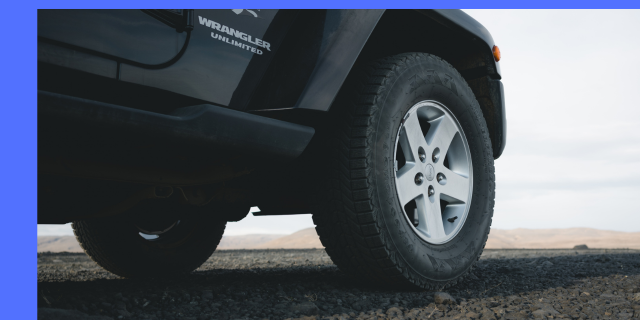What Are Directional Tires & Should You Use It For Your Truck?
Truck tires differ in various ways, and the tread patterns are one of the notable differences. Tires have various designs suitable for various terrains and purposes based on their treads’ shape, size, depth, and pattern. In this guide, you will learn the directional tires and why you should use them for your truck.
What Are Directional Tires?
As a truck owner, you have come across various tires and noted that they differ in their treads’ features. Based on their tread patterns, directional tires can only rotate uniformly. When closely monitoring directional tires, you will realize that the lateral voids and channels on the tread point forward or down. The channels on the sides of the treads run like two waterfalls from the opposite direction.
Directional tires are the best for traveling at high speeds as they channel water away and offer the best hydroplaning resistance giving you a sporty performance on off roads. It is not easy to rotate directional tires on a truck since you must dismount the tires from the wheels and remount them after rotating. Due to this, many truck owners only switch directional tires from back to front when performing a rotation.
How To Tell If Your Truck Uses Directional Vehicle Tires
Directional tires have treads that look like an arrow pointing where the tire rotates, mainly the front of your truck. When you keenly look, you will realize that the tread pattern has a solid ribbed center, which moves up and away from the center of the tire, like a V or Y.
You can also look at the mounting direction to determine if your tires are directional. During installation, directional tires can only face a specific direction. They usually have an arrow or an indicator on the side wall that indicates the side it should be mounted on.
Why You Should Use Directional Tires on Your Truck
Directional tires have a unique tread design, and some are wide. The V-shape treads with a wide surface give them a better look. These are the reasons you should consider installing directional tires on your truck.
Good Looks
Directional vehicle tires are popular because of their looks, and they have an eye-catching tread pattern with v-shaped grooves to resist hydroplaning when driving on wet surfaces. Wider tires need to come with an anti-hydroplaning design due to their wider contact patch on the road, but currently, the v-shaped directional pattern is now popular in wider and slimmer tires.
Improved Performance
Installing directional auto tires on your truck will improve its handling and performance compared to traditional tread patterns. Besides expelling water, the V-shape treads offer better traction when driving on sand, gravel, and dirt. Water expulsion and improved traction enhance the way your truck handles when driving.
Conclusion
Directional vehicle tires are becoming popular by the day. The main reason for their popularity is the ability to expel water when driving on wet surfaces and improved traction on various driving surfaces. Consider installing directional vehicle tires on your truck for a better driving experience.



